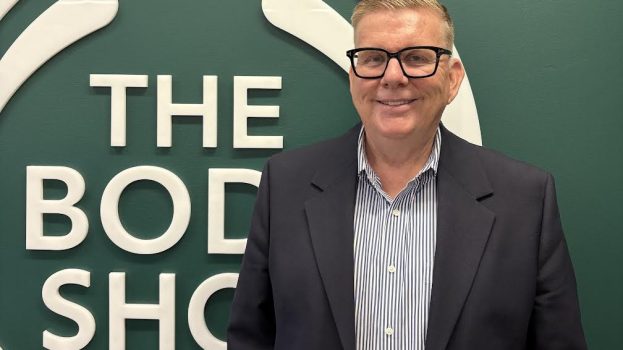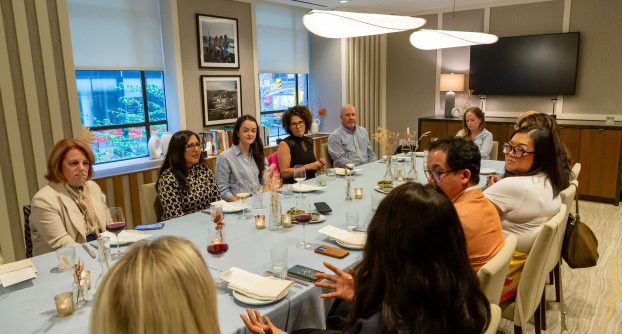This story appeared in Strategy C-Suite, a weekly email briefing on how Canada’s brand leaders are responding to market challenges and acting on new opportunities. Sign-up for the newsletter here to receive the latest stories directly to your inbox every Tuesday.
Fear and a “desynchronized society” are two of the drivers expected to impact the consumer mindset over the next two years, explained WGSN’s Andrea Bell at strategy’s Atomicon conference in Toronto today. Those drivers, along with what the forecasting company describes as “radical optimism” and “equitable resilience” in its Future Consumer 2022 report, are forces whose impact will be felt across industries over the next few years, according to Bell.
The research is based on the observations of WGSN’s experts, as well as a mix of data sourced from a variety of sources, such as economic reports. Each of the drivers mentioned above are connected to three emerging profile groups – two of which Bell explored in-depth during her Atomicon keynote speech on Tuesday – that will disrupt various industries and drive sales through 2022.
The Stabilizers
Of the four drivers influencing consumer mindset, Bell says fear has emerged as the strongest unifying cultural force globally.
Twice per year, WGSN research teams from 14 different countries gather to discuss what’s happening in their respective markets. During those meetings, fear emerged as “the great unifier,” says Bell. “It was financially agnostic, demographically agnostic… It manifests itself differently for each generation. But there was just this overwhelming sense of people being fearful for the future.”
On top of that, Bell says the predominance of social platforms in our lives has led to an epistemic crisis, described by WGSN as a “desynchronized society.” (Epistemology is the branch of philosophy that examines the concept of truth, and how we know what we know.) In a world dominated by social media, consumers constantly hear and cling to the negative, even though many countries are better off today than they were before. “We’re being flooded,” she says. “So while it may seem that everything is falling apart and the house is burning, things are getting better.”
The “Stabilizers” have emerged in response to those forces. They are “under an enormous amount of pressure, they are decision-averse, and they want some sort of stability and calm in their life,” says Bell. “They have this need to optimize, because they believe that optimization will help them lead a more calm and less anxious life. But over-optimization in itself becomes a new metric,” adding another form of pressure in consumers’ daily lives.
To connect with these consumers, Bell says companies need to bear in mind their tendencies to be risk-averse and adopt a simpler visual language. “Clean up your product assortment, streamline your ecomm and streamline your in-store,” she says. “If you’re a mom or dad with three kids, the last thing you want to do is go into a store that has 50,000 products.”
She believes it’s the reason many DTC companies continue to succeed, and why Aldi has done well as a limited-assortment grocer. These companies have streamlined the path to purchase. “The [traditional retail] path to purchase is incredibly fragmented,” she says. “For the Stabilizers, that’s a massive turn-off.”
The New Optimists
A cohort described as the “New Optimists” have also emerged in response to growing anxiety among consumers the world over. The group covers a broad demographic range, from Gen Z to Boomers, but are unified in their desire to embrace joy, says Bell.
For example, Gen Z, an activist-first consumer group, have been tied to their phones and deeply engaged with social issues for most of their lives. “The weight of that activism is actually causing them to burnout,” Bell explains, so many are finding new ways to experience pleasure and celebrate the small wins. Many no longer believe that activism must be anchored in anger to be authentic. For example, Generation Now is a global collective of Gen Z climate activists who emphasize joyful protest, tree planting and working with local communities.
Meanwhile, older New Optimists are striving for equality. As a result, ageing is being rebranded and companies are finding ways to invest in their ageing workforce, WGSN finds. A 2018 Deloitte survey found that 16% of companies are creating special roles for older workers and 20% are working with them on new career models that suit their lifestyles. Bell says that, despite their differences, both Gen Z and Boomers are aligned in their desire to redefine ageing.
Retailers and brands vying to connect with New Optimists will need to create products and services that meet their lifestyles, focusing on hyper-local delivery, says Bell. “This is where your test and invest for last-mile delivery comes in strong.”
Think AR/VR, live-streaming and hyper-localized social commerce, she says. As participants in the “celebration economy,” New Optimists are always ready for an adventure or event, so retailers that provide a platform for group ordering and delivery will see greater success with conversion. Peer-to-peer commerce platforms, such as MyBeautyBrand in the U.K., will also continue to grow.
“We have a lot of Gen Z who say, ‘I don’t go shopping, because I’m too busy protesting and hanging out with my friends.’ So it’s meeting them in that space.”
























